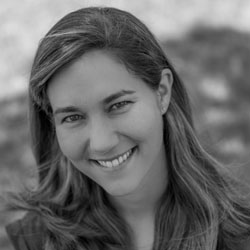
 |
My name is Michele Cash and I grew up in San Jose, California. As the daughter of an engineer and a chemist, STEM was a part of my life from a young age. We would do science experiments at home: using bread to culture bacteria from different locations around the house (i.e. growing mold on bread in the window sill), making home-made eclipse viewing boxes, and using cabbage leaves as an acid/base indicator to test all the liquids in the house. I also had an electronics kit that I loved to play with. I would build intruder alarms for my room and motorized boats for the bathtub. When I was in second grade I read one of my first chapter books - a biography about astronaut Sally Ride - and that is when I decided that I wanted to go to Stanford, get my PhD in astrophysics, and become an astronaut! This goal of getting an advanced degree in a space-related field stayed with me throughout my school days. It motivated me to continue pursuing advanced science and math classes in high school even when I was one of only three girls in my high school AP physics class and the youngest student (the only junior) in the class.
After high school I attended Stanford University, where I was a President’s Scholar and majored in Physics with a minor in Feminist Studies. As an undergraduate, I sought out research opportunities in a wide range of physics sub-disciplines from condensed matter physics to astrophysics to plasma physics. I even had the opportunity to spend three weeks in Ethiopia conducting geophysics research during my junior year. After graduating from Stanford in 2004, I headed to Seattle where I earned my Master’s degree and PhD in Space Plasma Physics from the University of Washington.
I currently work at the Space Weather Prediction Center (SWPC) within the NWS where I am a physicist working on the newly operational Geospace model, a physics-based model of Earth’s magnetosphere that allows us to predict regional geomagnetic disturbances associated with solar activity. Activity on the sun not only influences Earth’s near-space environment, posing hazards for humans and satellites in space, but the effects of solar activity can be felt on the ground as well. Space weather can significantly impact society both economically and socially through effects on GPS systems, the electric power grid, aviation, and high frequency radio communication.
I initially started working at SWPC in 2012 as a Research Scientist affiliated with the Cooperative Institute for Research in Environmental Sciences (CIRES) at the University of Colorado. Six months ago, I joined the NWS and transitioned into my new role supporting the Geospace model. I love that my current role allows me to apply the plasma physics expertise that I gained during my PhD work to problems that are relevant to the real world. I enjoy working in an environment where I get to collaborate with diverse individuals from researchers and programmers to forecasters and customers.
Diversity in the workplace, especially in STEM fields, is incredibly important. Diversity brings new ideas, new ways of approaching problems, and creative solutions. Women and girls can do just as well in STEM courses and STEM careers as their male colleagues. STEM fields are challenging, and embracing that challenge is part of what makes these careers so exciting and rewarding. When presented with a difficult problem, instead of saying to yourself “I can’t do this, I’m not good at science or math”, think of it as an opportunity to learn, ask questions, and try something new. Even math problems can benefit from some creativity!
I think a lot of learning happens outside of the classroom. If you are interested in a STEM topic, learn more about it. Go tour a lab, meet with a scientist, find an internship, or volunteer. In high school, I would volunteer on the weekends at the Tech Museum of Innovation in San Jose, CA which was great opportunity to develop expertise in different science areas as I helped the public perform laparoscopic surgery on a mannequin and experience the different seismic waves associated with eight simulated earthquakes while standing on a large shake table.
I have also been involved in several activities aimed at encouraging young women to explore STEM topics. For my Girl Scout Gold Award project, I put on a workshop at the Children’s Discovery Museum in San Jose for middle school girls teaching them about sound waves and the Doppler Effect. As a graduate student, I designed a space weather ring toss game that highlighted the ways that space weather affects our civilization and the ways in which we can mitigate the effects of space weather. I would play the game with visitors at the Pacific Science Center in Seattle, WA as part of the scientist spotlight program. More recently I have participated in the Expanding your Horizons workshops for middle school girls teaching a course on electricity and magnetism in which the girls were able to build their own electromagnets. Such hands-on learning experiences provide the opportunity to explore different careers and acquire new skills. No matter your age or how far along you are in your education, opportunities like these are out there and they can be a great way to find potential mentors – something that is important at every stage of your career!
Pretty much all things outdoors: Hiking, running, backpacking, mountaineering, mountain biking, and rock climbing. I’m also mom to two awesome little girls (ages 3 years and 9 months).